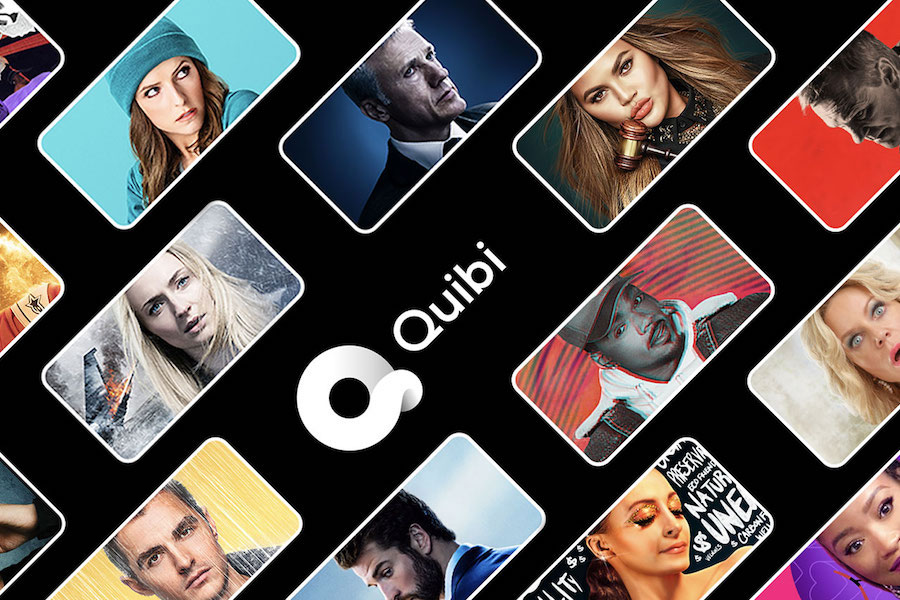 With an algorithmic shift to entertainment-based content on social platforms, it’s time for brands to rethink how social content is made, writes Alex Totaro.
With an algorithmic shift to entertainment-based content on social platforms, it’s time for brands to rethink how social content is made, writes Alex Totaro.
Making content for social has never been as complex, rewarding or accessible as it is now. With platforms vying for market share and the creator landscape dominating feeds globally, social media’s complete transition into video feels like it’s finally coming full circle.
As predicted years ago with the boom of YouTube, followed by initial experiment spinoffs like IGTV, Snapchat Shorts and Facebook Watch, our feeds have been totally transformed by a seemingly insatiable appetite for visual, compelling and entertaining content.
While video isn’t the only content worth making, I want to dive into what the modern feed actually looks like, taking time to reflect on the elements required to make good content for today’s audiences.
Over 85% of internet users watch videos each month and while this encompasses native video platforms like YouTube, it’s a staggering statistic that speaks to the current landscape around what users expect to consume on social media and why video is a must-have in any content feed in 2024.
The renewed interest in organic social growth, fuelled by updated feed UIs focused on algorithmic-driven engagement (versus who you follow) has also created a bigger divide across budgets, whether that’s investing in native, social-first content versus paid ads. Whilst paid is still worthwhile and essential for driving objectives, this shift has given marketers (and creators) an opportunity to experiment in ways not seen since brands originally made their first foray into social media marketing.
#fyp – Chasing interests, not individuals
I jokingly bought my old manager a ‘scroll ring’ for TikTok. A small device that sits on your finger with two buttons to swipe past TikTok content (or, in today’s feeds, any social platform) without even having to touch the screen. This small gadget is indicative of the dramatic change in which engaging with social media has evolved in both the volume of content consumed and how it shows up for users.
First, let’s talk about the updated UI elements now seen across the most popular social media channels. The ‘for you page’ style of content has now become commonplace, marking a shift from the horizontal endless scroll of structured squares and copy in favour of a mobile-focused vertical and full screen experience. Quibi (RIP!), a TV-like precursor to this format, was ahead of its time but sadly not ahead of its audience. Focused on broadcast-quality productions aimed at millennials and cable cutters, it fascinatingly exemplifies the profound impact of the app experience and its influence over the way we communicate, interact and engage.
This change marks the ‘Tiktokification’ of the social feed. Where Quibi failed, TikTok succeeded in creating an app experience unlike anything else in the market. A full-screen experience is launched as soon as you open the app, where the ‘home page’ or feed is now the For You Page, showing you videos based on your interests or previous interactions. This is key, because your followership only ranks to a certain percentage in this algorithm, with the platform showing content from different verticals, brands or creators.
A Big Boost
Firstly, this seemingly small change gives creators a huge boost, as they can broaden their reach beyond just their dedicated audiences and create viral moments that truly live up to the scale in name. Additionally, it removes the pressure of chronologically displaying content, where evergreen or otherwise older pieces can show up at any time and with multiplied results rooted in exposure to users, not to mention the app’s built-in tools for remixing content.
It’s a feedback loop that created an experience all on its own, forcing another very popular app, Instagram, to adopt its style and make Reels the defacto format for the platform. If you check on X (formerly Twitter), you’ll find that when you open a video it now allows you to swipe vertically for the next one. The same will happen for YouTube Shorts and, very much like when Snapchat popularised the ‘Stories’ format, we’re seeing apps adapt to this model more and more, necessitating the change not just in creating more video content but how that is approached in line with other fragments of the platform available to the marketer.
Lean back, with a twist
The passive nature of content consumption, however, is at direct odds with what platforms want the most: for the user to stay on their platform as much as possible. The UI is not the standard video player we have grown accustomed to over the past decade, and at first can seem dauntingly cluttered. All sorts of information is displayed from the get-go, from location tags to other users, trending sounds (another boon to discoverability), copy and buttons for sharing the content.
The shift towards a more ‘dark’ experience on social platforms, meaning private interactions between users, lends itself to this new approach to displaying content. The platforms make it easy and encourage users to share content with others, prompting an interaction that translates as engagement for the algorithm, sharpening results and keeping you in the loop for as long as possible. This creates an extremely intriguing intersection between a lean back, passive experience, infused with interactivity and designed for the smartphone’s vertical screen.
With all of this in mind, the first ‘rule’ of content creation hasn’t really changed too much: make it engaging from the first few seconds but also as relevant as possible within its context. It’s true that there is now less time for a user to pick up the video and watch beyond the first few seconds, but a new relationship between user and platform is established around trusting the algorithm to know what the user considers ‘good’.
“I’ve trained my algorithm to show me exactly what I want”, would chime another colleague when talking about the ring. This kind of complex relationship requires platform-first thinking from the very top of the brief and requiring content to have a singular, elevated purpose. Lean back experiences vs. Lean ‘in’ experiences had dominated video making for years thanks to YouTube’s video-only approach but focused on interest and search. Passive and active experiences have culminated in what I can only describe as a ‘stay put’ experience.
Making content that actually cuts through
Now that we better understand what the modern feed functions, I want to re-look at how making video can be a powerful and accessible tool no matter what brand is behind the wheel. The fundamentals haven’t all changed, but have been strengthened by the need to cut through more effectively than ever before:
Invert the narrative structure: ABC storytelling only works in cinema, television and longer-form formats that provide a formulaic approach to narrating a story. Whilst, of course, this has evolved over the past two decades, especially with avant-garde television, many brands are still porting their TVCs or OOH ads onto social, expecting users to be hooked by the idea that it will get interesting to them by the time they approach the 30” mark. This, unfortunately, has never worked on social media platforms and is increasingly reductive in efforts to quickly get attention. Whether it’s loud thumbnails with a lot of design elements plastered all over the video – think reactions, emojis, giant text as captions- or otherwise, a video needs to hook the user in the first three seconds. Inverting the narrative structure, such as starting the story from the hook and working your way backwards, has always been an effective (and much more interesting) approach to create a video that pays off for those that are intrigued enough to stay on it. As discussed previously, we’re shifting to an interest-based model, so it’s never been more important to be as intentional as possible with how we get users’ attention.
Create from the ground up: It doesn’t matter what narrative structure you use if you’re not creating videos from the ground up. This, ideally, would be with mobile devices and tools that any user could use to create their own content.
Lo-fi is a misused word in the field because it implies low quality visuals, production values and intent. The point is to not create a broadcast quality asset that lives on social because it’s perceived as overkill for its intended purpose. This does not mean you should not shoot in HD or 4K, have slick transitions or in fact great colour grading or quality, but it has to be designed as such and intended to only live on the platform. Lo-fi content also works, it shows a less polished and more relatable side of a brand that creates a different link with the user or fan.
Creating ‘POV’ style videos, phone-in-hand and putting actual people in the content is a way of creating high quality for social content in a way that looks great, is designed with a platform in mind and creates interest for the user.
Brand accordingly: We all work with brands and understand that brand recall is usually the number one objective when investing in any piece of content. Be mindful of the context in which the content is displayed in; organic or paid content will always live within its supporting profile, meaning key brand information like its name, logo and/or campaign tagline will automatically be alongside any and all content published.
The caption space, whilst squeezed due to the mentioned UI changes, is still another place to display the more technical or legal side of content, whether that’s T&Cs, store information or additional details that would otherwise get in the way of experiencing the entertaining side of the video. Users have grown fatigued of brands dominating their feed, so creating content that feels more ‘authentic’ (read: like everything else they’re being exposed to by creators, friends and families) will outperform and not diminish brand recall due to a deeper link established through interest.
Use native tools: Creating video has also never been more accessible, with platforms like CapCut offering an easy, almost automated way to edit content on the fly that’s designed for the vertical feed. Be it transitions, filters or captions, there are now countless ways to cost-efficiently create content that doesn’t require a full editing suite to get over the line.
While some built-in editing tools still have a long way to go (I’m looking at you, Instagram Reels), platforms have never made it this easy for anyone to turn virtually anything into content. Have some pictures that share a moment or vibe? Google/Apple photos will make a collage, montage with music or might even throw in a GIF. Posted a few stories on your channel? Instagram will take them and turn them into a reel for you and ready to share with one tap.
Capcut, purchased by ByteDance, TikTok’s parent company, in 2018, is consistently within the top ten most downloaded apps in the App Store across many countries. With its dizzying array of tools, from sharpening videos, to stabilisation, cropping and magic erasers, all are built-in to edit on your phone and on the fly, making creating content an absolute breeze.
Hand in hand with the point above, it means that things like text on screen do not need to be branded and, in fact, should be built with the native options as much as possible to provide that feeling of authenticity. The same goes for technical elements of the platform, like location tagging, user tagging, choosing a sound/song (if any) or even automatic captions, which are good both for accessibility but also for those who prefer to keep it old school and consume with no sound. Most of these elements have ranking factors, especially sounds and location, and can broaden reach if used correctly.
Think interactively: There are many ways to make two-dimensional content interactive and a more ‘lean in’ experience. In earnest, brands should be constantly asking users to engage with the content, whether it’s to ask questions of what unfolds in front of them or prompting shareability through the platform. Social media is the quickest way to gather feedback at scale and a powerful tool to influence other parts of the business. Whether it’s asking for a favourite flavour, colour, character or predicting what will happen next, a simple question can elevate the piece of content well beyond feeling like a mere execution.
Test & Learn: Test and learn methodologies should be applied throughout all strategic executions and ideally thought through at a brief’s infancy to ensure multiple outputs can come off the main asset with a real hypothesis – or problem – to solve. Paid media facilitates this best and different tests could include audience buckets, call to actions, creative routes and styles and even which characters to feature when promoting across gaming or entertainment.
Keeping an eye out KPIs is the only way to truly test and learn and ensuring all elements can be tracked in equal measure to facilitate a fairer analysis. Comparing types of content is also effective, whether its as a series vs. Stand-alone, length of video or even if captions are used and how often, taking a step back to allow for analysis is the most cost effective way to producing better video audiences will love and engage with, not to mention getting key messaging to cut through as a consequence.
Creating content is still a strategic and thoughtful endeavour
Don’t get rid of the creative team just yet. Great ideas are still the bedrock of all good content and will require more than just trend-hopping to get key messaging across to the right people. There’s a balance – and skill – to adapting campaigns to social-first formats, some which can at first seem a side to the main course but can quickly become the main meal thanks to its measurable scale vs. other traditional formats.
Deceptively simple content is oftentimes the cleverest, rooted in a clear message crafted for a specific platform and leveraging its native tools for a place at the table, and, as it may just happen, a ring on a finger.
Alex Totaro is Head of Social and Digital with Pluto





















